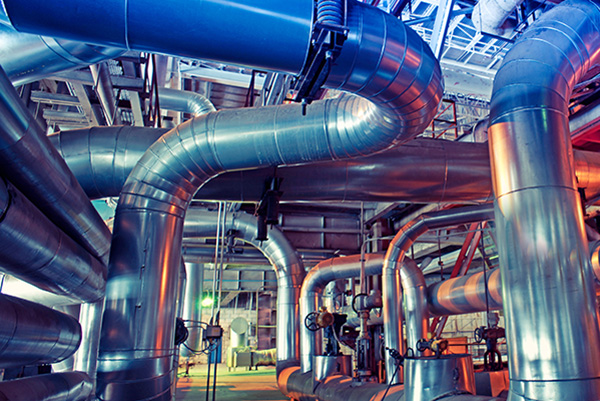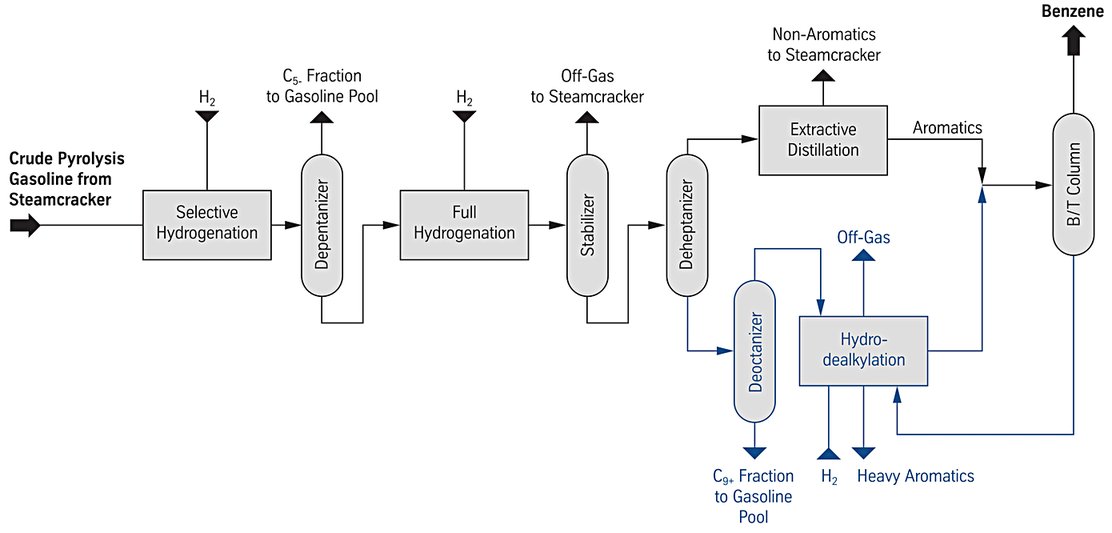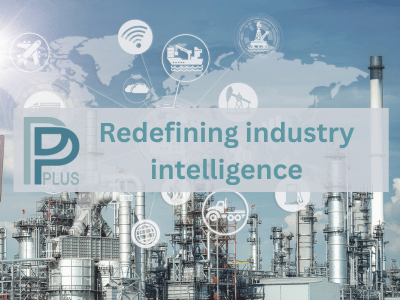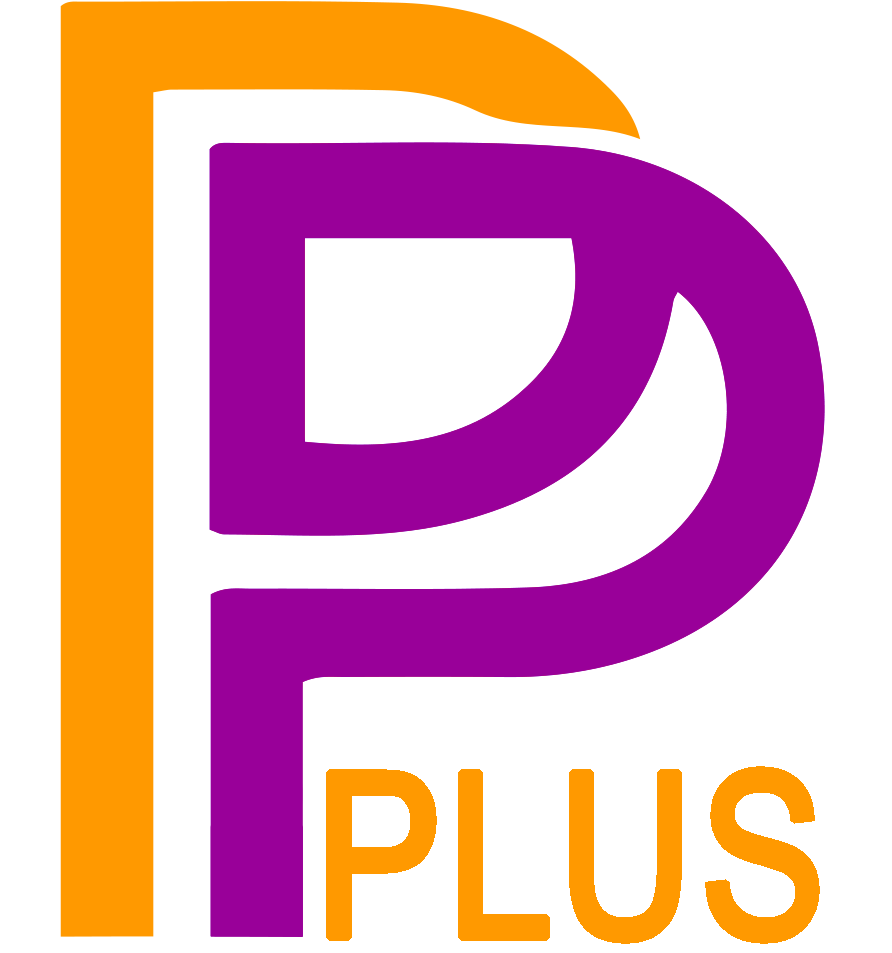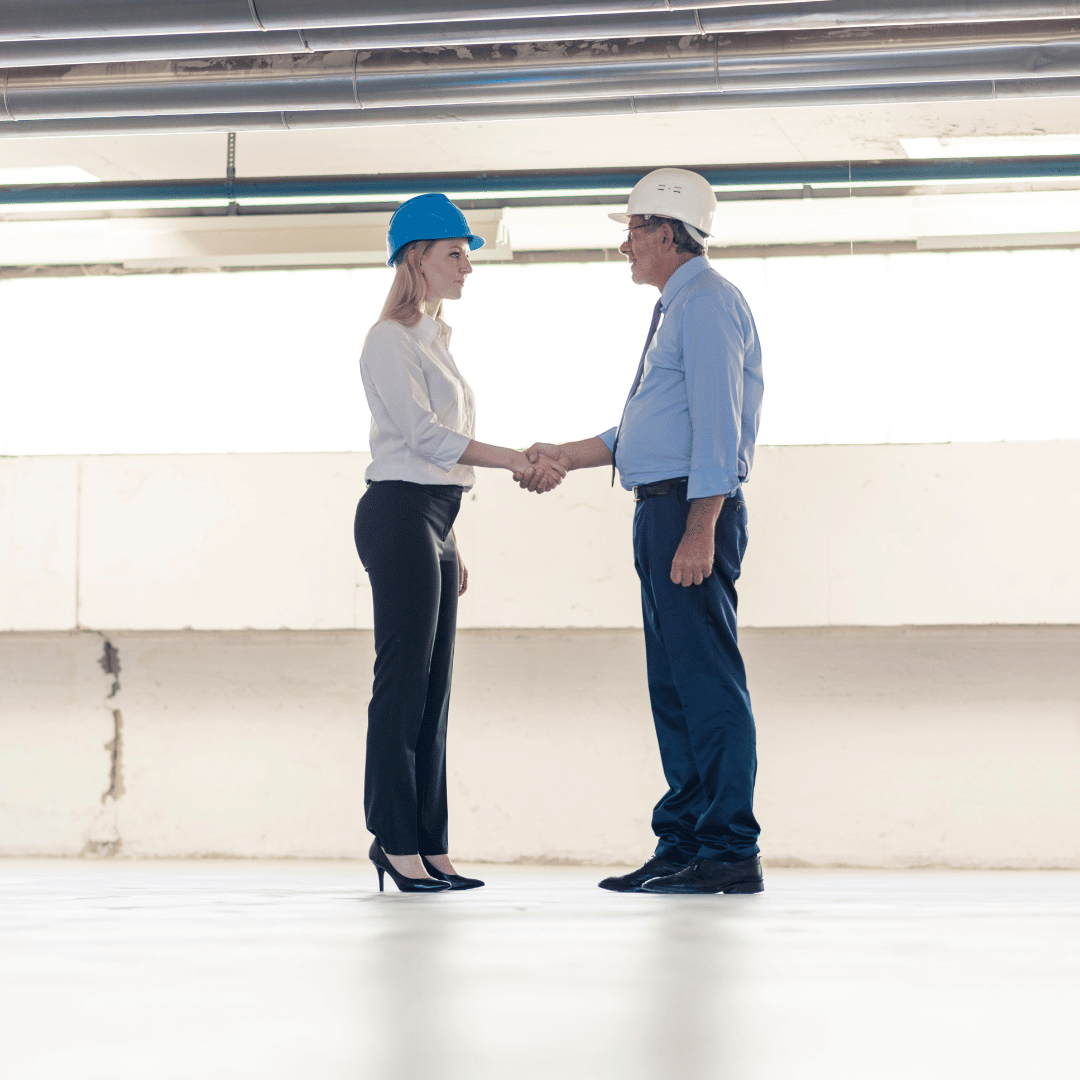Process Overview
The aromatics extraction process recovers aromatics (benzene, toluene, xylenes mainly from the following feedstocsk:
The process involves multiple steps to obtain high-purity aromatic products, involving:
- Initial hydrogenation to saturate olefins and remove sulfur prior to aromatics extraction
- Primary separation columns for fractionating the hydrogenated pygas into appropriate cuts
- Main extraction using either extractive distillation (ED) or liquid-liquid extraction (LLE) with selective solvents
- Recovery and purification columns to obtain high-purity aromatic products
The sequence and number of columns can vary based on feed composition, product slate requirements, integration with other process units and economic considerations.
Initial Treatment
Raw pyrolysis gasoline (pygas) must first undergo selective hydrogenation due to its high diolefin content that can cause polymerization and gum formation. This hydrogenation occurs in two stages:
Primary Separation Columns
Before extraction, the hydrogenated pygas undergoes preliminary fractionation:
- Depentanizer: removes C5 and lighter components
- Dehexanizer: separates C6-rich cut
- Heavy ends column: removes C9+ components
Main Extraction Section
Two main technologies are employed for aromatics extraction, Extractive Distillation (ED) and Liquid-Liquid Extraction (LLE).
1. Extractive Distillation
The ED process operates as follows:
- A nonvolatile polar solvent is introduced to the upper section of the extractive distillation column (EDC)
- Hydrocarbon feed enters the middle section of the EDC
- The solvent preferentially extracts polar aromatic components as it descends
- Non-aromatics exit as overhead vapor, are condensed, and partially recycled as reflux
- Rich solvent containing aromatics flows to a solvent recovery column (SRC) where:
- Aromatics are recovered as overhead product
- Lean solvent is recycled back to the EDC
In ED, the aromatics are recovered as an overhead product while the lean solvent is recovered from the bottom of the SRC for recycling back to the EDC. The solvent recovery is integrated into the SRC, which functions more like a conventional distillation column rather than a stripping operation.
The extractive distillation process typically operates under these parameters:
- EDC top pressure: 0.10-0.30 MPa
- Solvent inlet temperature: 80-130°C
- Bottom temperature: 130-180°C
- Solvent/feed weight ratio: 3.0-7.0
2. Liquid-Liquid Extraction (LLE)
The LLE process involves:
- Contact between the hydrocarbon feed and a selective solvent in an extraction column
- Formation of two liquid phases:
- Extract phase: rich in solvent and aromatics
- Raffinate phase: containing non-aromatics
- The extract phase proceeds to:
- Washing column to remove trapped non-aromatics
- Recovery column for aromatics separation
- Solvent stripping for recycling
- The raffinate phase undergoes:
- Water washing to remove dissolved solvent
- Final product recovery
The key difference with ED is that LLE requires additional recovery steps including:
- A washing column for removing trapped non-aromatics
- A dedicated stripping section for solvent recovery
- Water washing of the raffinate phase
The liquid-liquid extraction process typically operates under these parameters:
- Operating pressure: 0.2-0.5 MPa
- Extraction temperature: 30-60°C (lower than ED due to phase separation requirements)
- Solvent/feed ratio: 2.0-4.0
- Number of theoretical stages: 15-25
- Residence time: 15-30 minutes
- Extract phase aromatics content: 20-30 wt%
- Raffinate aromatics content: < 0.5 wt%
The recovery section typically operates under the following parameters:
- Stripping column pressure: 0.12-0.15 MPa
- Stripping temperature: 140-180°C
- Water wash temperature: 40-60°C
- Solvent recovery: >99.9%
Solvent Selection
Common solvents used include:
Post-Extraction Separation Columns
After extraction, the aromatic-rich stream undergoes further fractionation:
- Benzene column: produces high-purity benzene
- Toluene column: separates toluene fraction
- Xylene splitter: separates mixed xylenes (when required)
Complementary Processing Steps
The recovered aromatics can be further processed through various complementary processes integrated with aromatics extraction if desired, such as:
- Hydrodealkylation, particularly to convert toluene and xylenes into additional benzene.
- Transalkylation and Dispropornation, in particular to convert toluene and C9-aromatics into benzene and xylenes.
- Xylenes processes, such as p-Xylene Adsorption, Crystallization and Xylenes Isomerization.


